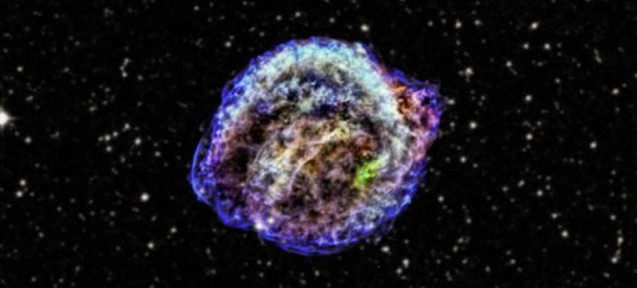Ever wondered what a dead star looks like? Then have a gander at the image above — you’re looking at “Kepler’s Supernova”. First spotted 410 years ago today, it’s the most recent supernova to have been observed without sky-gazing equipment within our own galaxy.
Named after Johannes Kepler, the German astrologer and mathematician who first observed the event, Kepler initially thought that the supernova was a brand new star, as it appeared brighter than any other planet in the sky. For three weeks in October of 1604, it was said to be visible even during the day time, with a magnitude of -2.5. Only centuries later scientists were able to identify it conclusively as being a supernova, with the Japanese Suzaku satellite using X-ray technology to dissect the fading star.
The supernova’s remains are estimated to be roughly 23,000 light-years away. A type “Ia” supernova (occurring in systems where two stars orbit each other), it was a white dwarf, turning supernova as its dense core had stopped creating nuclear fusion reactions. To this day, no other supernovae inside the Milky Way have been identified with certainty. Its light may have faded, but Kepler’s supernova still burns brightly in the minds of star gazers as a result.
Picture: NASA/CXC/NCSU/M.Burkey

